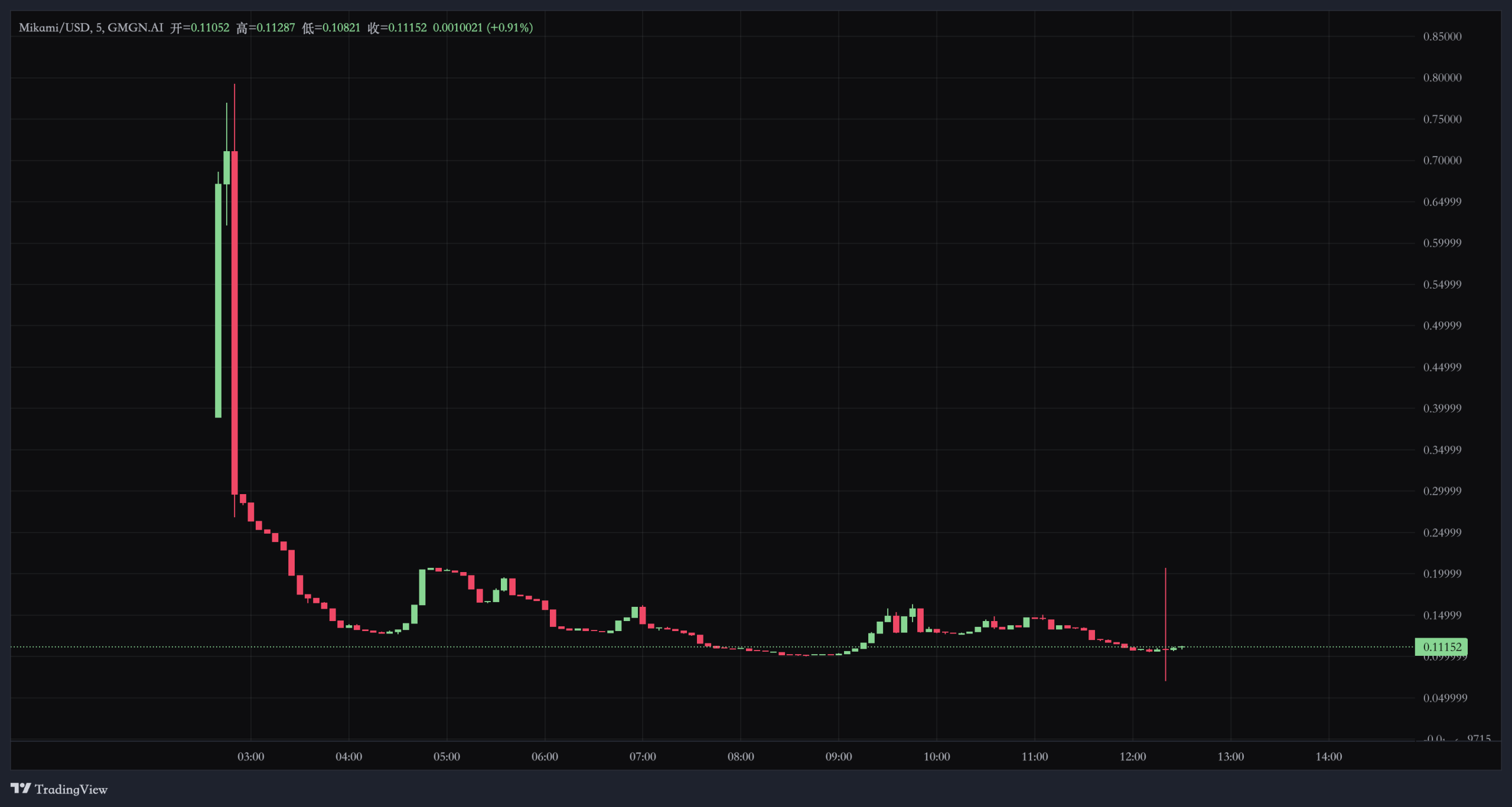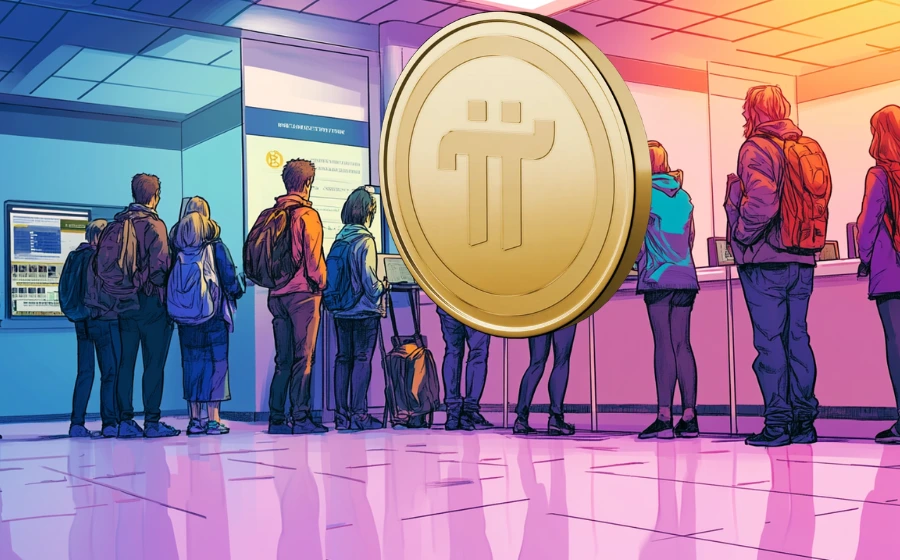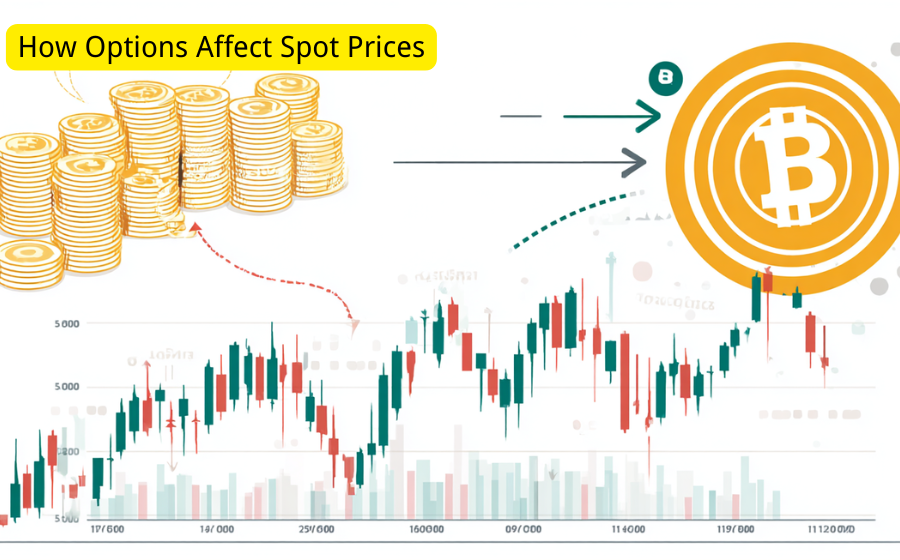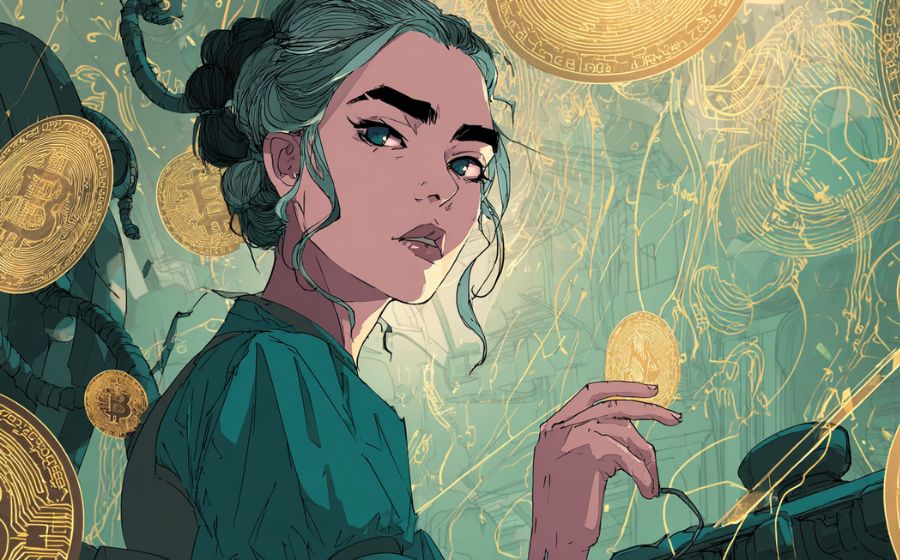
KEYTAKEAWAYS
-
Yua Mikami meme coin ($MIKAMI) crashes 70% post-launch, revealing risks of celebrity-backed crypto projects and speculative trading.
-
On-chain data shows rapid dumping by early investors, exacerbated by Solana’s low fees, triggering the price collapse.
-
Fan engagement failed to sustain value, highlighting the gap between hype and utility in meme coins.

CONTENT
In the early hours of May 8, 2025, the Yua Mikami meme coin $MIKAMI launched on the Solana blockchain.
Within just a few hours, its price dropped more than 70%, falling from the presale price of $0.245 to $0.10. The market cap shrank to $6.98 million.
What started as a “fan celebration” quickly turned into disappointment, sparking widespread debate in the crypto world.

1. BACKGROUND: FAN ECONOMY MEETS MEME COINS
Yua Mikami, a famous Japanese adult film star with over 17.5 million fans worldwide (8.23 million on Twitter, the rest across platforms like Instagram), announced her meme coin $MIKAMI in early 2025.
The project aimed to turn fan engagement into blockchain-based interactions—offering exclusive content, NFTs, and community building.

The token’s design was attractive:
- 69 million total supply
- 20% for presale (raised ~$3.47M or ~23,321 SOL)
- 50% locked until 2069 for Yua
- 15% for liquidity, 10% for community, and 5% for marketing
The story of celebrity endorsement plus a long lock-up created hype among investors.
But things went south fast. According to GMGN blockchain data, the price shot up to $0.30+ after launch but then crashed to $0.10 due to heavy selling.
The market cap fell from $16.8 million (fully diluted) to $6.98 million. Many on X (formerly Twitter) accused the team of launching at midnight to avoid attention and manipulate the market.
▶ Buy Crypto
CoinRank x Bitget – Sign up & Trade to get $20!
2. ON-CHAIN DATA: WHAT CAUSED THE CRASH?
Using tools like GMGN and Solscan, here’s what the data shows:
- Presale and liquidity:
13.8 million tokens were sold at $0.245, and 10.35 million tokens were added to the liquidity pool—worth about $2.53M if valued at the presale price.
- Dumping by early buyers:
Smart wallets (early investors) sold over 6 million tokens within 30 minutes after launch, crashing the price from $0.35 to $0.10.
- Solana’s low fees and fast speed made it easy for bots and big holders to sell quickly, worsening the price drop.
3. COMMUNITY REACTION: FROM HYPE TO ANGER
On X, community sentiment changed fast:
- Before launch: Yua promoted the token via Twitter and livestreams. Fans created hashtags like #MikamiToTheMoon. Many believed the 2069 lock-up showed long-term value.
- After launch: Some early investors bragged about profits, but retail buyers were soon hit by the crash. People began questioning the midnight launch.
- After crash: Many felt betrayed, saying fans were being “harvested.” Some compared it to past meme coin scams. One user joked, “Yua’s videos are worth $0.245, but her coin isn’t even worth $0.10.”
Although Yua has many fans, only about 20% (around 3.5 million people) got involved with the token—and most were speculators, not loyal fans. This shows that turning fanbases into blockchain users is harder than expected.
4. INDUSTRY TREND: MEME COIN BUBBLE AND REGULATION RISKS
$MIKAMI’s crash is part of a bigger trend in the meme coin world. Since Dogecoin and Shiba Inu became popular in 2021, many similar coins have launched—but most rely on hype.
Problems include:
- No real use cases:
$MIKAMI mentioned NFTs and fan content, but these features aren’t live yet. The token has no utility beyond speculation.
- Market manipulation:
Solana’s low fees make it easy for insiders and bots to control the market. $MIKAMI’s dump looks like past “pump and dump” schemes from 2024.
- Regulation concerns:
Japan’s regulators are watching celebrity-backed tokens closely. Although $MIKAMI is on Solana (outside Japan), Yua is Japanese, which might cause issues. Other countries, like the U.S. and EU, are also exploring how to regulate meme coins as securities.
5. LESSONS AND WHAT’S NEXT
$MIKAMI’s fall is a warning for both investors and project creators. It shows how unstable meme coins can be, especially when based only on hype. It also shows how risky celebrity coins are without clear use or trust.
This may be a turning point. To survive long-term, meme coins need more than memes—they need real value and transparency.















